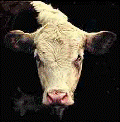Animal Science, Department of

Department of Animal Science: Dissertations, Theses, and Student Research
Date of this Version
8-2016
Document Type
Thesis
Citation
Schweer, K.R. 2016. Genome-wide association study for feed efficiency traits using SNP and haplotype models. MS Thesis. University of Nebraska-Lincoln.
Abstract
Feed efficiency has long been recognized for its economic importance in beef cattle production systems. Feed intake is not a routinely collected trait on-farm due to the expense of measuring individual feed intake. Identification of genomic regions associated with feed efficiency and its component traits would be advantageous for selection programs. The objective of this study was to uncover genomic regions associated with average daily gain (ADG) and average daily feed intake (ADFI) through genome-wide association studies (GWAS) with SNP and haplotype Bayesian models. Phenotypes of ADG and ADFI along with genotypes from the BovineSNP50v2 array from crossbred steers and heifers (n=748) representing seven sire breeds were used in the analyses. Traits were analyzed independently through SNP (BayesC) and haplotype models (BayesIM) and together in a bivariate haplotype model. For the BayesIM model, haplotypes were mapped to haplotype clusters based on local haplotype similarity using a hidden Markov model (HMM) and the haplotype clusters were fitted as covariates in the Bayesian mixture model. The number of haplotype clusters at each location was assumed to be either 8 (BayesIM8) or 16 (BayesIM16), resulting in a total of three univariate analyses for each trait and two bivariate analyses. Posterior genomic heritability estimates (PSD) for ADG were 0.28 (0.08), 0.46 (0.12), 0.46 (0.12), 0.44 (0.10) and 0.44 (0.12) for BayesC, BayesIM8, BayesIM16, BayesIM8 bivariate and BayesIM16 bivariate, respectively. Average daily feed intake posterior genomic heritability estimates (PSD) were 0.30 (0.07), 0.46 (0.10), 0.45 (0.09), 0.45 (0.09) and 0.46 (0.11) for the same analyses. Top genomic regions across all univariate analyses for ADG exist on BTA 3, 4, 13, 20 and 22 while ADFI was associated with regions on BTA 1, 13 and 21. Potential pleiotropic genomic regions associated with both traits were identified through bivariate analyses on BTA 1, 13, 20 and 25. The use of multi-trait models for GWAS is currently unexplored in beef cattle. A multi-trait model can use information from one trait to inform the other when the traits are genetically correlated.


Comments
A THESIS Presented to the Faculty of The Graduate College of the University of Nebraska In Partial Fulfillment of Requirements For the Degree of Master of Science, Major: Animal Science, Under the Supervision of Professor Matthew L. Spangler. Lincoln, Nebraska: August, 2016
Copyright (c) 2016 Kashly Rene Schweer